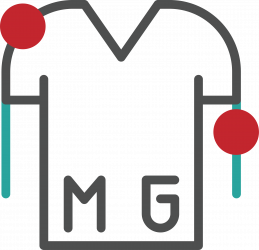Reverse total shoulder replacement is a surgical procedure used to treat severe shoulder pain and dysfunction caused by conditions such as rotator cuff tear arthropathy, severe osteoarthritis, or a failed previous shoulder replacement. It is a more complex surgery than traditional shoulder replacement and is designed for patients who have significant rotator cuff damage and weakness.
Procedure:
During a reverse total shoulder replacement, I remove the damaged or arthritic bone and replaces it with a metal and plastic prosthesis that functions as a new shoulder joint. The main difference between a traditional shoulder replacement and a reverse total shoulder replacement is the position of the implant components. In a reverse total shoulder replacement, the ball and socket joint are reversed, with the ball being placed on the shoulder blade and the socket on the upper arm bone. This allows the deltoid muscle, rather than the rotator cuff, to lift the arm, which can be beneficial for patients with significant rotator cuff damage.
Recovery:
Recovery from reverse total shoulder replacement can take several months and involves a combination of physical therapy and pain management. Patients will typically wear a sling for several weeks following surgery and will need to avoid lifting heavy objects or performing strenuous activities until they have fully recovered. Physical therapy will focus on improving range of motion, strength, and flexibility in the affected shoulder.
Complications:
As with any surgery, there are risks and potential complications associated with reverse total shoulder replacement. These may include infection, blood clots, nerve damage, implant dislocation, and implant loosening or failure. It is important to discuss these risks and follow all post-operative instructions carefully to minimise the risk of complications.
Conclusion:
Reverse total shoulder replacement is a complex surgical procedure that can provide significant relief for patients with severe shoulder pain and dysfunction caused by rotator cuff tear arthropathy, severe osteoarthritis, or a failed previous shoulder replacement.
